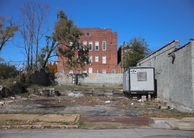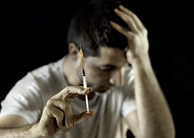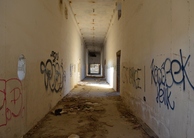Featured Article:Out in Force: The New Struggle Against Sexually Oriented Policing
By
2015, Vol. 7 No. 03 | pg. 1/2 | »
KEYWORDS:
Since the inception of the American crime fighting force, law enforcement has struggled to prevent discrimination against minority populations. While “racial profiling” (also known as “racially biased policing”)1 has been an issue within police departments for centuries, discrimination and profiling based on sexual orientation2 is emerging as a new problem within the policing field. Particularly, the gay, lesbian, bisexual and transgender3 (GLBT/LGBT) community is most at risk due to a heterosexist and gendered4 police culture.5 Early police tactics and practices point to a culture rooted in heterosexism, a system of attitudes, bias and discrimination in favor of opposite-sex sexuality and relationships (Jung, Smith 1993). Heterosexism also suggests that maleness/masculinity and femaleness/femininity are complementary.6 Contrary to popular belief, the initial role of the police focused on traditional female roles that included service, nurturing and protecting morals and virtues (Schulz 1995, Miller 1999). However, as crime increased, police departments came to be dominated by white, “masculine” and heterosexual values (Messerschmidt 1993) that taught them to be symbols of “aggressive masculinity.” 7 This led to an increase in aggressive policing, which included more arrests, ignominious use of police discretion, profiling of certain suspects and the use of excessive force.8 Early police tactics and practices point to a culture rooted in heterosexism, a system of attitudes, bias and discrimination in favor of opposite-sex sexuality and relationships... police departments thus came to be dominated by white, “masculine” and heterosexual values that taught officers to be symbols of “aggressive masculinity.” As police embraced this attitude, over time police recruitment tactics, for example, slowly excluded “outsiders.” Overly physical requirements were incorporated to exclude women, while superfluous written and educational tests excluded blacks (Cooper 2010). Departments excluded members of the LGBT community by conducting “background investigations and personal interviews [that] further screen[ed] out candidates who failed to express the ‘correct’ attitudes toward the meaning of masculinity, including an aura of toughness and aggressiveness,” (David, Brannon 1976; Martin 1992).The permeation of policing as heterosexist has led to “gendered” conflicts for GLBT and heterosexual officers within departments. In fact, coming out as GLBT within departments was not accepted until recently and often resulted in dismissal (Doss 1990). No police officer acknowledged being gay or lesbian in public until 1981 when Sergeant Charles Cochrane of the New York City Police Department made history at a New York City meeting dealing with a gay rights bill (Barlow and Barlow 2000). Today, many GLBT officers still experience discrimination based on how their sexuality is perceived. How quickly these perceptions are either positively or negatively diffused can affect workplace conditions, though negative perceptions of GLBT officers tend to surface more quickly. 9 Sklansky (2006) contends that about 5% to 35% of police officers identify as GLBT, though it varies largely depending on the region of the country. Yet, between 16% and 46% of LGBT officers reported experiencing employment discrimination after coming out (Cohen, O’Byrne, & Maxwell 1999, 2006). Some officers noted that outing themselves either created access or barrier points to how comfortable they felt in the workplace (Bolton 2003). According to a study conducted by Colvin (2008), 67% of LGBT officers reported homophobic comments as the most frequent attitudinal barrier they believe stood in their way of a promotion, while another 51% and 48% reported being treated like an outsider and social isolation, respectively, as barriers. Positive or negative situational factors also play a large role in the decision to be out. Because of this discrimination, LGBT police officers feel under tremendous pressure to conform to prevailing gendered stereotypes (Colvin 2008). For example, a female officer must maintain a certain level of femininity or she runs the risk of being deemed “butch” while male officers must remain tenacious to commonly associated masculine traits or they are automatically perceived as “gay.” This, in turn, causes many LGBT officers to assess the costs and benefits of being out at work,10 with costs usually outweighing benefits. Herek (2003) contends that most perceptions and prejudicial attitudes result from a number of factors. Authoritarianism11, sex, race, religiosity, education, geographic location, contact with and exposure to LGBT people and culture, and limited or false information regarding sexual orientation are amongst these factors. Additionally, the lack of training police officers are given in academies in understanding the GLBT population decreases sensitivity (Paulson 2008). Opponents of LGBT officers’ reported that they felt inclusion of GLBT culture would decrease morale for the department and their job and position as officers would cause people to perceive them as weak.12 Tensions internally affect how law enforcement officials police the LGBT community (Burke 1994). Historically, relations between the police and the GLBT population have been strained.13 The earliest event most representative of these tensions occurred in 1969 when police raiding and overt harassment of GLBT customers at the Stonewall Inn, a gay bar in New York City’s Greenwich Village, prompted a riot.14 In 1987, police charged and successfully got two men prosecuted in Tennessee for sodomy to discourage other GLBT people living there (Brantner 1992). Just ten years later, a sheriff illegally wire tapped a gay football coach’s telephone to blackmail him into quitting from his job (People for the American Way Foundation 1998). Recently, in March 2003, police stormed the Power Plant; a private club frequented by LGBT African Americans and arrested over 350 people. Some people were hit in the back, head and others were slammed into walls while being verbally assaulted. Later on police reported that “loitering inside a building” prompted the investigation (Mogul, Ritchie, Whitlock 2011). These tensions have developed into aggressive policing of the GLBT community. In a study of 222 heterosexual officers conducted by Bernstein and Kostelac (2002), 42% of officers reported negative attitudes towards GLBT members. These negative attitudes are manifested in police condoning hate crimes and interpersonal violence (IPV), or domestic violence, (Paulson 2008) against GLBT communities as “harmless pranks or an acceptable form of behavior,” (Berrill 1992). In a recent study by the National Gay and Lesbian Task Force, 20% and 29% of GLBT people reported being denied equal treatment, while also experiencing verbal/physical harassment and disrespect by police officers, respectively. 46% reported being uncomfortable in seeking police help. However, not all of the research and literature seems to be consistent for all police departments and law enforcement employees. Part of Lyons, DeValve and Garner’s (2008) statistics were derived from a study of Texas police departments, which tend to be more conservative and consistent overall with old school police ideology. A field study, which consisted of a four hour ride-along, with Officer Luis Aguilera of the Metropolitan Police Department’s Second District, reflected a different police culture. Because Washington, D.C., is a more liberal and inclusive city and has one of the highest populations of GLBT residents and communities in the nation, GLBT culture is more pervasive and thus more accepted.15 As a result, police officers are exposed to members of the community more often than, for example, in Texas.16 However, exposure is still seldom.17 For example, while Aguilera admitted that the department sometimes employs aggressive policing tactics, he noted that they rarely use them. Nevertheless, aggressive policing tactics are not solely used against specific minority members, especially those part of the GLBT community.18 While they are applied to special minority populations, Aguilera posited that these tactics are used against any individual of any community that act as what Maneen, Dunham and Alpert (2011) call the “asshole.”19 According to Aguilera, the “assholes” usually tend to be African Americans and other minority groups who are usually overly aggressive and combative to police force.20 This factor, however, tends to be less common for blacks with postsecondary degrees, and more common for blacks from more crime afflicted areas of D.C. such as the south and north east quadrants. This is likely for GLBT populations as well, though race is still a major factor in perceived or actual hostility from GLBT people by the police. Aguilera also admitted that racially biased profiling is a regularly used tactic in the predominantly suburban and “white-bred” section of the District. The paucity of major crime in the Second District accounts for this use minor of racially based profiling, which usually involves asking suspect individuals questions than an immediate use of force. Citizens’ attitudes determines the type of policing style Aguilera employs more so than their sexual orientation. Despite D.C.’s overall liberalness in political and social issues, policing is still not impervious to all aspects of overall police culture. Aguilera admitted that certain characteristics are still used by police to characterize and profile certain suspects and situations based on what he knows about policing and precedent, especially when race is an issue. Aguilera specifically discussed heterosexual domestic violence disputes, 21 or opposite sex interpersonal violence (OSIPV) 22 vs. GLBT/same sex interpersonal violence (SSIPV).23 The officer noted that the incidence of solving a call for a heterosexual domestic violence dispute is relatively low, especially since couples are even more hostile when police arrive on scene. Additionally, few heterosexual couples choose to report incidences of domestic violence as well. Paulson (2008) contends these same facts are true for SSIPV. However, Paulson argues that GLBT relationships are viewed as less normal and valid in police eyes resulting in SSIPV cases being taken even less serious OSIPV. Additionally, because sexual minorities are viewed as “deviant” and “possessing low moral character,” social institutions have undermined GLBT relationships, the ability of SSIPV victims to procure legal and social services, and are perpetuating institutional heterosexism (Potoczniak, Mourot, Crosbie-Burnett; Potoczniak 2003). Aguilera confirmed this part of the research by noting that as an officer he handles very few GLBT cases of IPV. Yet, when he does, it is difficult to figure out whether the couple is “acting out” for attention or if the issue is valid.24 Aguilera’s attitude towards GLBT culture reflects policing variations that can occur based on certain personal factors mentioned by Herek (2003). In terms of geographic location, Aguilera polices an area where few incidences of crime arise, making him less able to deal with “abnormal” issues such as GLBT violence or even people. During the ride along, Aguilera noted that as a racial minority (Latino) he understood the plight of the GLBT community somewhat, though he did not fully understand the idea of “homosexuality” or most aspects of GLBT culture. While Aguilera divulged that he was currently going back to college, it is his experience in the military and lack of postsecondary studies on current issues that he attributed most to not understanding homosexuality.Continued on Next Page » Suggested Reading from Inquiries Journal
Inquiries Journal provides undergraduate and graduate students around the world a platform for the wide dissemination of academic work over a range of core disciplines. Representing the work of students from hundreds of institutions around the globe, Inquiries Journal's large database of academic articles is completely free. Learn more | Blog | Submit Latest in Criminology & Criminal Justice |


















